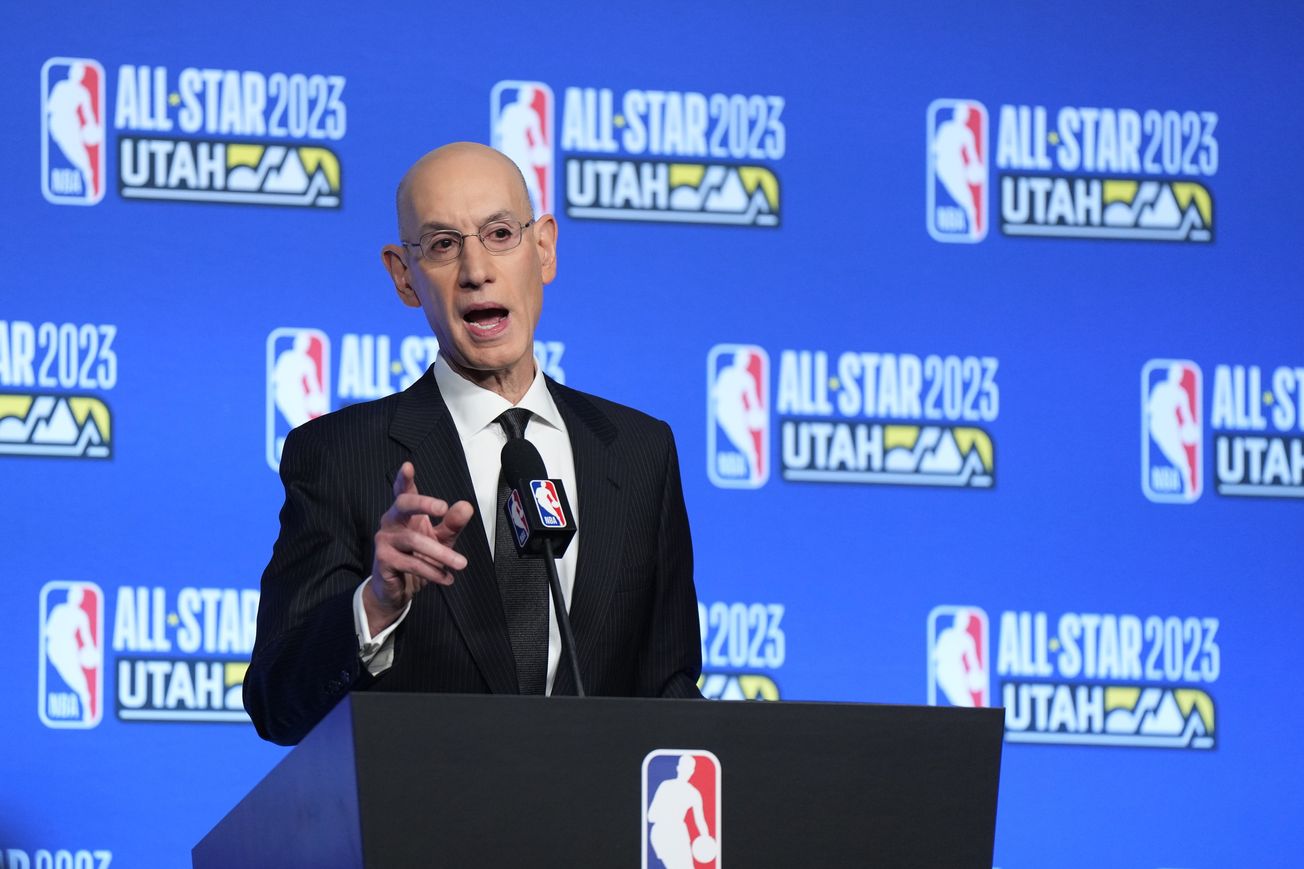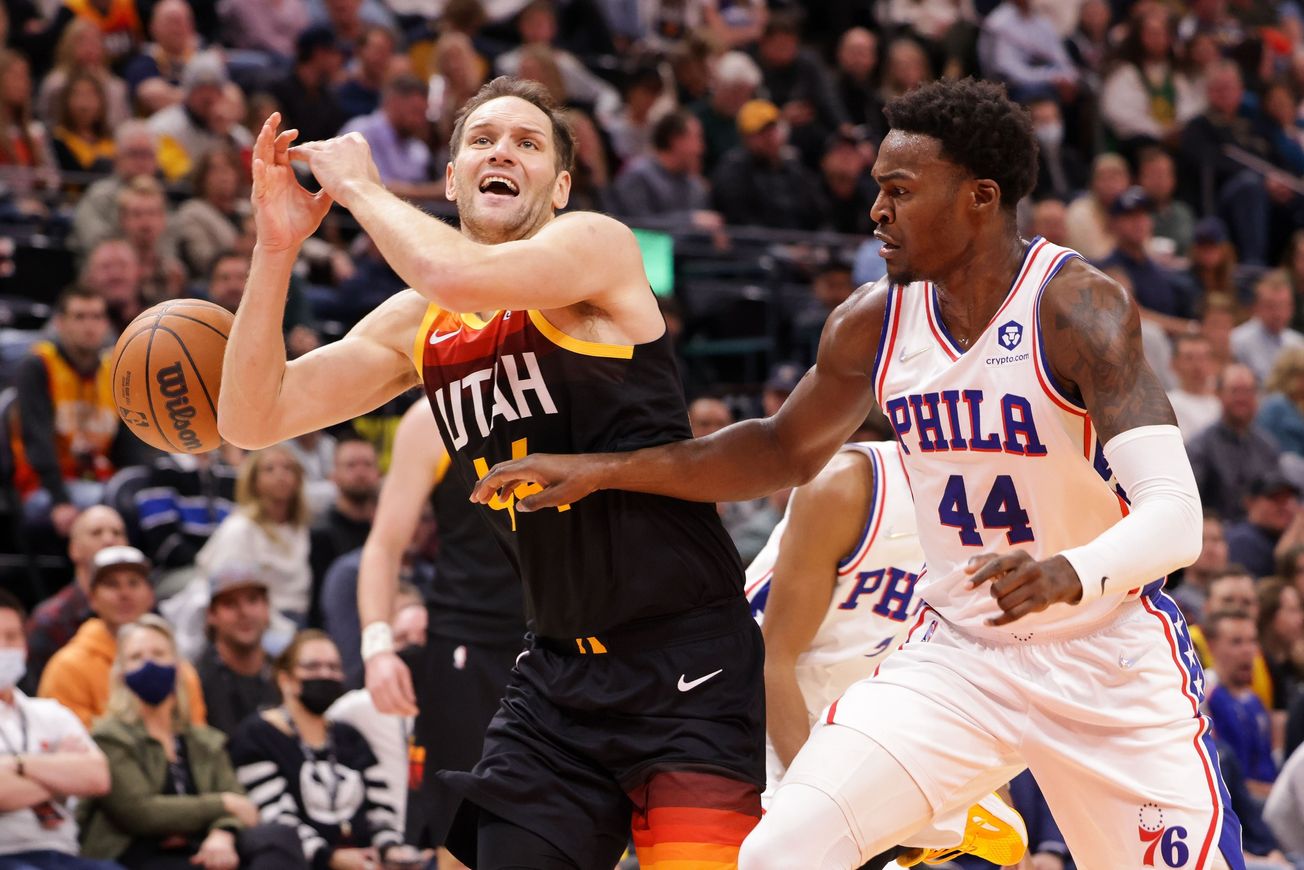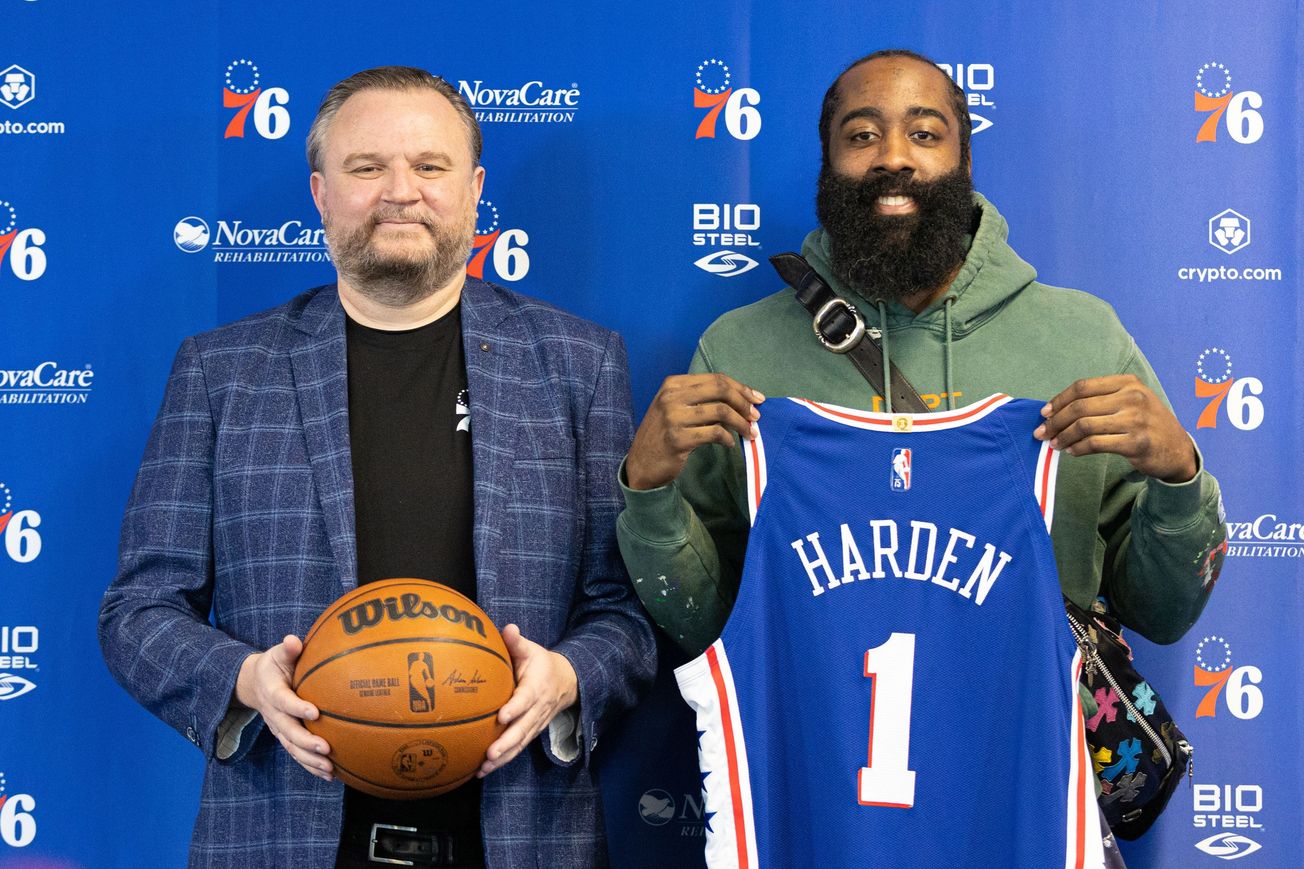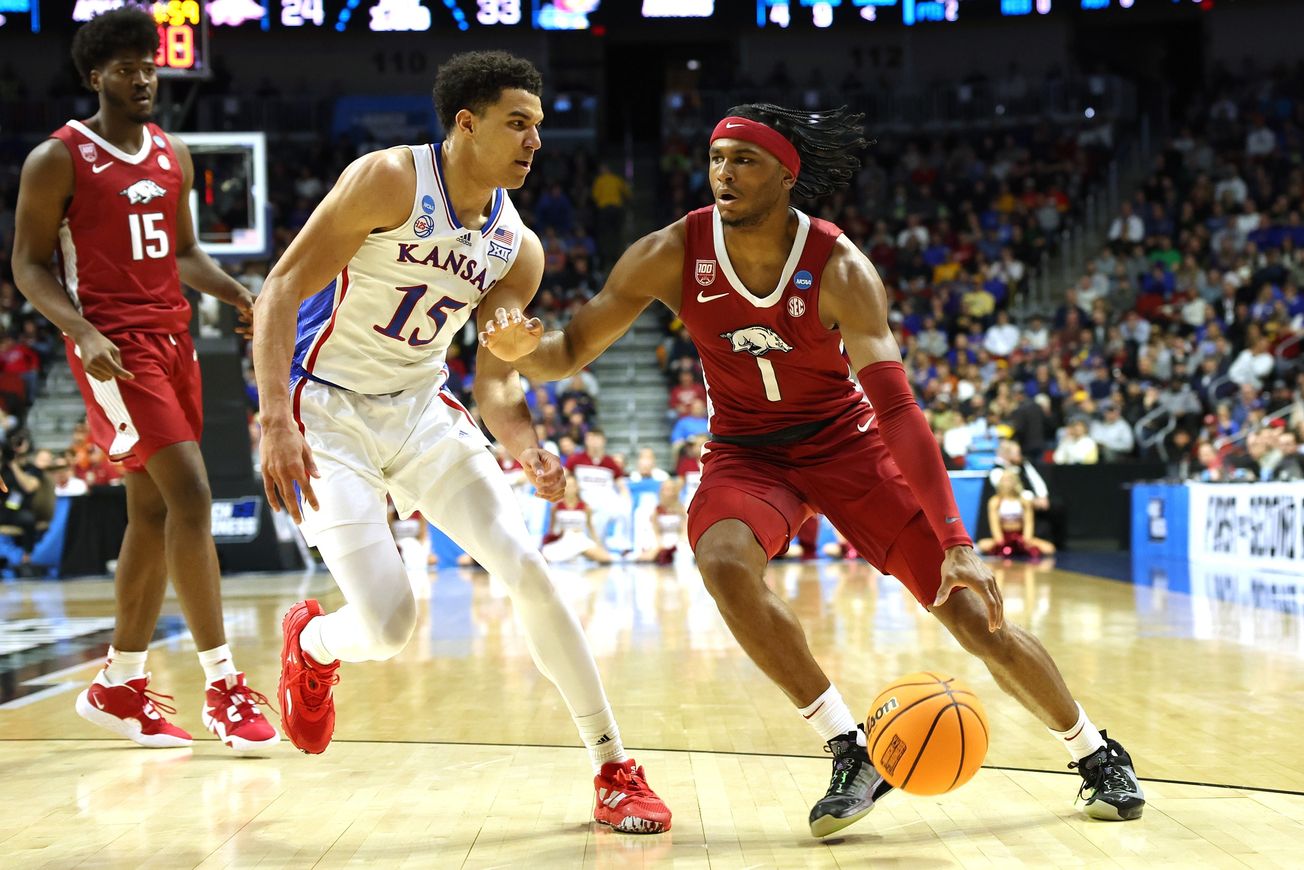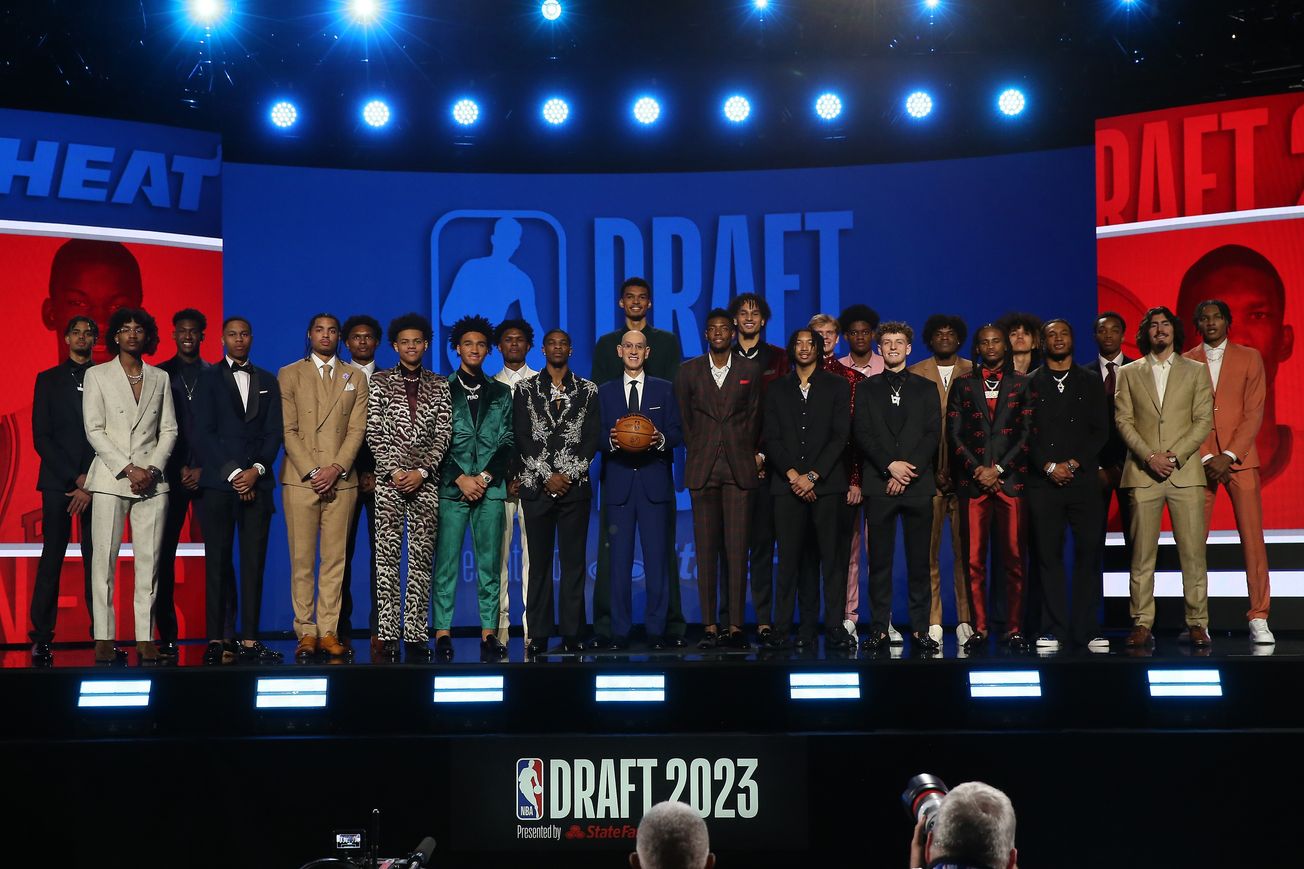Starting on July 1st, the NBA will be operating under a new Collective Bargaining Agreement, terms that will significantly alter how teams are constructed over the next six+ years.
A significant focus in the new agreement is to curb some of the exorbitantly high payrolls that we've seen under the current CBA, such as those from teams like the Golden State Warriors and Los Angeles Clippers, with owners seemingly willing to foot whatever luxury tax bill is necessary to put the best team on the floor.
With financial punishments not enough to dissuade big market teams from outspending the competition, under the new CBA the league has turned to even more punitive restrictions on personnel moves once team spending reaches a certain threshold.
In the past we spent a lot of time talking about the luxury tax apron, a salary threshold that if teams exceeded they had a select few team-building moves they could no longer perform. Or, conversely, if they had already performed those moves, then the apron threshold effectively became a hard cap. Last year, because the Sixers signed PJ Tucker to the non-taxpayer mid-level exception, they were not allowed to exceed the $156.9 million in team salary.
But the full list of moves which triggered the hard cap was relatively small, and mostly avoidable. For example, rather than use the full, non-taxpayer mid-level exception on PJ Tucker the Sixers could have instead used the smaller taxpayer MLE and not been bound by the hard cap. They wouldn't have been able to get Tucker, and would have had to use their exception on a different free agent, but it was their choice that Tucker was worth the constraints of the hard cap.
The other moves which triggered the cap – using the bi-annual exception, receiving a player in a sign-and-trade deal – are either moves that don't have a lot of impact (bi-annual exception) or are not all that frequent (sign-and-trade). Perhaps more importantly there were other ways for big spending teams to continue to add players to their roster.
With the introduction of the revised rules, and with a new second apron threshold, it became significantly more difficult to be a big spending team.
Here's a breakdown of some of the changes, followed by examples of how they will impact the Sixers going forward.
(Note: This is part one of a two-part offseason primer, with the second article going over all the decisions the Sixers have to make this summer, and all the considerations that go into them. Being that these CBA changes are going to impact everything that teams do from here on out I wanted to get this out first to serve as a point of reference for the rest of the summer).
The first apron threshold
The first apron threshold will be set at $7 million above the luxury tax line for the upcoming 2023-24 season, which places the current estimate for the apron at $169 million (on a $134 million cap and $162 million luxury tax threshold). In future seasons the apron threshold will grow at the same rate that the salary cap does. (For example, if the cap increases by 10% in 2025-26, the apron and second apron will both increase by 10% from the previous year as well.)
I have updated the Philadelphia 76ers Salary Cap page with the latest cap, luxury tax and apron estimates.
Once teams reach that first luxury tax apron, they're hit with the following restrictions:
- They can't sign buyout players (defined as a player waived during the regular season who had a pre-waiver salary greater than the amount of the non-taxpayer MLE.)
- Can't take back more than 110% of their outgoing salary in a trade. (Starting with the 2024-25 season this will drop to 100% of the value of the outgoing salary. Teams below the apron can take back up to 125% of the salary they send out in a trade.)
- Starting in 2024-25, teams above the apron threshold can't use a TPE that was generated during the prior season. (whereas they typically only expire after 365 days.)
All of the rules below are in addition to the rules already in place regarding the apron. These rules, as a reminder, are:
- Teams above the apron get the smaller, taxpayer ($5 million) mid-level exception rather than the full ($12.2 million) exception to use.
- They can't use the bi-annual exception.
- They can't acquire a player in a sign-and-trade deal.
- They have limited salary matching on Early Bird restricted free agents.
Not only are teams above the apron not allowed to perform any of these moves, but if a team below the apron executes one of the moves listed above the apron becomes a hard cap for the rest of the season.
The second apron threshold
The second apron threshold will be set at $17.5 million above the luxury tax line for the 2023-24 season, which puts current projections at $179.5 million for the upcoming season. The second apron will then increase at the same rate as the salary cap for future seasons.
Once teams hit the second apron threshold, they are hit with the following restrictions (which are in addition to the restrictions from the first apron):
- They lose the taxpayer MLE.
- They cannot aggregate salaries in a trade. (Starting in 2024-25.)
- They cannot use cash in a trade. (Starting in 2024-25.)
- They cannot acquire a player who previously changed teams in a sign-and-trade deal. (Starting in 2024-25.)
- Their first-round draft pick seven years down the line gets "frozen", meaning it can't be traded. If the team then exceeds the second apron in two of the next four years, that frozen pick is moved to the end of the first round, regardless of where the team finishes in the standings. The pick can become "unfrozen" (and thus eligible to be traded again) if the team drops below the second apron in three of the next four years.
Passing the first apron threshold introduces significant restrictions on a team trying to build out their depth. The MLE ($5 million for the non-taxpayer vs $12.2 million for the taxpayer MLE) limits these teams to a much lower class of free agents that they can pursue. Dropping the salary matching down to just 100% of the outgoing salary (compared to 125%, as it currently is) provides much less flexibility to make a trade work.
Throw in the restrictions of a second apron and teams become really limited to make any kind of meaningful additions to their roster. Teams at this level wouldn't have any mid-level exception (taxpayer or non-taxpayer) to use, nor would they have their bi-annual exception. Not only would they not be able to take back more salary in a trade, but now they can't even aggregate salaries. Outside drafting and developing players, and signing players to minimum contracts, adding depth becomes incredibly tough once a team reaches this level of team salary.
In addition to that, it increases the number of transactions which would trigger a hard cap, as performing any of the previously mentioned moves means a team has to stay below that respective apron threshold. For example, if a team uses the $12.2 million non-taxpayer MLE, the first apron threshold becomes a hard cap. If they instead use the $5 million taxpayer MLE, the second apron becomes a hard cap. Or if they aggregate salaries in a trade* at any point throughout the season, they become hard capped at the second apron level, which also means that teams are going to want to have a little bit of a buffer between them and the apron thresholds in order to maintain flexibility should the right trade opportunity present itself.
(*starting in 2024-25.)
The impact on team building
Generally speaking, this means the following:
- Stockpiling max contracts is going to become significantly tougher. Not only is having four max deals, a la the Golden State Warriors, going to be virtually impossible, but even having three max deals is going to be tough to build depth around, especially if they're on a 35% max.
- Players being paid star money have to actually provide star production. The "well, he's not worth it but we can't lose him for nothing" line of thinking should be a casualty of these changes. That is going to mean two things.
- First, non-star players that are currently on max contracts will have less value in a trade (unless they're on an expiring deal). In other words, Tobias Harris right now is actually a positive trade asset, because he's an expiring contract in a marketplace where lots of teams are going to be looking to get off of long-term money. But a Tobias Harris level player starting that contract now would be far more damaging, and even less tradeable, than Harris was four years ago.
- Second, it'll be interesting to see how depressed the market gets for borderline All-Star players, the group that may be the most impacted by these cap changes. Stars (true stars, a la top 20 to top 30 kind of players) are still stars, and since the max contract wasn't increased, they're still underpaid. Teams will still look to hoard as many of them as they can realistically get. But the next group of players, who were already largely context (the franchise players they're complementing, the scheme they're playing in, etc) dependent, you have to be very careful with. Paying someone like Tobias Harris even 80% of Joel Embiid's salary, for 40% of Embiid's impact, is going to be tough.
- Drafting, and developing, players, and keeping them around for their second contract is going to be even more of a key, as a 25% max (for home runs in the draft) and restricted free agency (for singles and doubles) are the most effective ways for teams to get players on below-market, long-term deals. Having a few of these home-grown success stories on your roster will be crucial as teams look to maintain depth around their max contract stars.
- Not only will those "second contract" success stories help keep your team salary under the aprons, but bringing back your own players with Bird rights will be one of the few ways a team above the second apron can add salary. The second apron is very restrictive, but teams will still be able to keep their home grown talent.
- That dynamic is going to be fascinating. Coaches on contending teams, generally, aren't going to play young players as much as fans usually want, but there's more incentive than ever to try.
Luxury tax changes
The penalties for being in the luxury tax get more punitive the deeper into the tax you go, with different tax rates that are determined by how far over the luxury tax you are. For example, under the current CBA you're taxed $1.50 for every dollar for the first $5 million over the tax you are, then $1.75 per dollar for the next $5 million, then $2.50 and so on.
Under the new Collective Bargaining Agreement, the first two tax brackets have become less punitive, and everything after that more, than the previous CBA was. This just adds financial pressure, along with the team building constraints, to try to incentivize teams to rein in their spending.
I'm not going to get too far into this, since I'm not too concerned with Josh Harris' bank account. But I'm sure he is, and because of that it will play a role in the team's future decision making, so it's worth mentioning.
Below is a table illustrating the differences in luxury tax brackets from the past CBA to the new one.
| Tax bracket | Prev CBA | New CBA |
|---|---|---|
| $0 - $5m | $1.50 | $1.00 |
| $5m-$10m | $1.75 | $1.25 |
| $10m-$15m | $2.50 | $3.50 |
| $15m-$20m | $3.25 | $4.75 |
| $20m+ | $0.50* | $0.50 |
(* for $20m+ over, the tax rates increase by $0.50 for every $5 million increment. So, for $20m-$25m over the rate would be $5.25, for $25-$30m it would be $5.75, etc).
Two quick examples, with how much a team would be taxed under the new CBA, compared with the old one, for a team $9 million over the tax line and for a team $24 million over.
| $ amt over tax | Prev CBA | New CBA |
|---|---|---|
| $9m over | $14.5m | $10m |
| $24m over | $60m | $73.5m |
The repeater tax penalties have also been adjusted. This time the penalties are increased across the board, but the increase for teams deep into the tax are even more severe.
| Repeater Tax bracket | Prev CBA | New CBA |
|---|---|---|
| $0 - $5m | $2.50 | $3.00 |
| $5m-$10m | $2.75 | $3.25 |
| $10m-$15m | $3.50 | $5.50 |
| $15m-$20m | $4.25 | $6.75 |
| $20m+ | $0.50 | $0.50 |
Here's that same tax penalty scenario used above, but this time for a team that qualifies for the repeater tax.
| $ amt over tax (repeater) | Prev CBA | New CBA |
|---|---|---|
| $9m over | $23.5m | $28.0m |
| $24m over | $84m | $121.5m |
The Sixers' ability to stay under the aprons
If you look at just the contracts that are currently on the books the Sixers are in a pretty good spot, with only two guaranteed deals (Joel Embiid and PJ Tucker) that extend beyond the 2023-24 season.
That very much does not mean that there's no concern, however, as when you add in the contract that it would likely take to get James Harden to return, along with the extension that Tyrese Maxey is going to eventually get, and add in the raise De'Anthony Melton could get next next summer, all of a sudden we're talking about the aprons again.
So rather than look at the relative blank canvas that is the Sixers' cap sheet, let's fill it in with some quick guesswork on some of the upcoming key free agents for the Sixers. I want to be clear that I am not confident in these numbers, as I think the new CBA makes me more uncertain on how the league will value players than I have been in a decade, and I am certainly not reporting that these numbers mean anything. I'm just filling in some numbers to give a better illustration on how quickly the Sixers will start approaching the apron thresholds, and thus how careful they need to be with the decisions that they make this summer.
| Player | 2023-24 | 2024-25 | 2025-26 | 2026-27 | Notes |
|---|---|---|---|---|---|
| Joel Embiid | $46.9m | $50.6m | $54.4m | $58.2m | |
| Tobias Harris | $39.3m | ||||
| PJ Tucker | $11.0m | $11.5m | |||
| James Harden | $40m | $40m | $40m | Meaningless guess | |
| Tyrese Maxey | $4.3m | $27m | $27m | $27m | Meaningless guess |
| De'Anthony Melton | $8m | $14m | $14m | $14m | Meaningless guess |
| Paul Reed | $6m | $6m | $6m | Meaningless guess | |
| Jalen McDaniels | $9m | $9m | $9m | Meaningless guess | |
| Furkan Korkmaz | $5.4m | ||||
| Danuel House | $4.3m | ||||
| Georges Niang | $5m | $5m | |||
| Jaden Springer | $2.2m | $4m | |||
| Total | $181.4 | $167m | $150.4m | $99.2m | |
| Cap | $134m | $143m | $157.3m | 173m | |
| Apron | $169m | $180.4m | $198.4m | $218.2m | |
| 2nd Apron | $179.5m | $191.6m | $210.7m | $231.7m |
In the scenario above, the Sixers would have just $24.6 million in space below the second apron in 2024-25 (with just nine players under contract!) and $60.3 million in space in 2025-26 (but with just six players under contract).
Now, hopefully Morey and the Sixers can get some of these guys back on cheaper deals, and the reality of the new financial landscape might help them do so, but you can see how quickly that second apron threshold can come into play, and this is where I remind you to take a look up above to remind yourself of all the limitations that it places upon a team.
(Now imagine those calculations with Bradley Beal making $54 million in a few years. This is one of the reasons that I was out on the possibility of the Sixers pursuing Beal. In order to make a $50 million + annual commitment to a player you better have a very strong level of confidence that the player you're acquiring is an answer as a franchise cornerstone, not just an improvement over Tobias Harris. Beal, with his drop in production over these last two years, with his injury history and his lack of availability in recent years, and with his incomplete game relative to other 35% max stars, presented too much uncertainty to make that kind of a financial commitment to, especially in the new double apron reality that we live in.)
Hopefully it was very obvious that those salaries filled in above weren't meant to be taken seriously. All of the new contracts being three years in length, with zero percent raises, would have been a clue that I didn't spend much time thinking about them. If not, I really hope that the "meaningless guess" note in the Notes column will prevent anyone from aggregating that.
But I do think some of the players that the Sixers have hitting free agency over the next two years are interesting test cases.
Maxey is the kind of player whose youth and upside used to command a higher salary than perhaps he is currently worth. Is that still the case now that there's more significant roster restrictions on high spending teams? How much will the middle class get squeezed? Will decision makers around the league be a little bit hesitant while everyone tries to figure out how the rest of the league is valuing players in this new economy?
Depending on how the Sixers navigate negotiating some of these contracts could dictate how much flexibility they have for the rest of Joel Embiid's prime.


